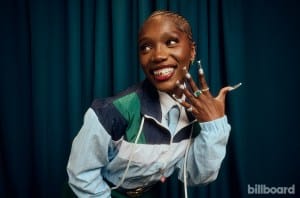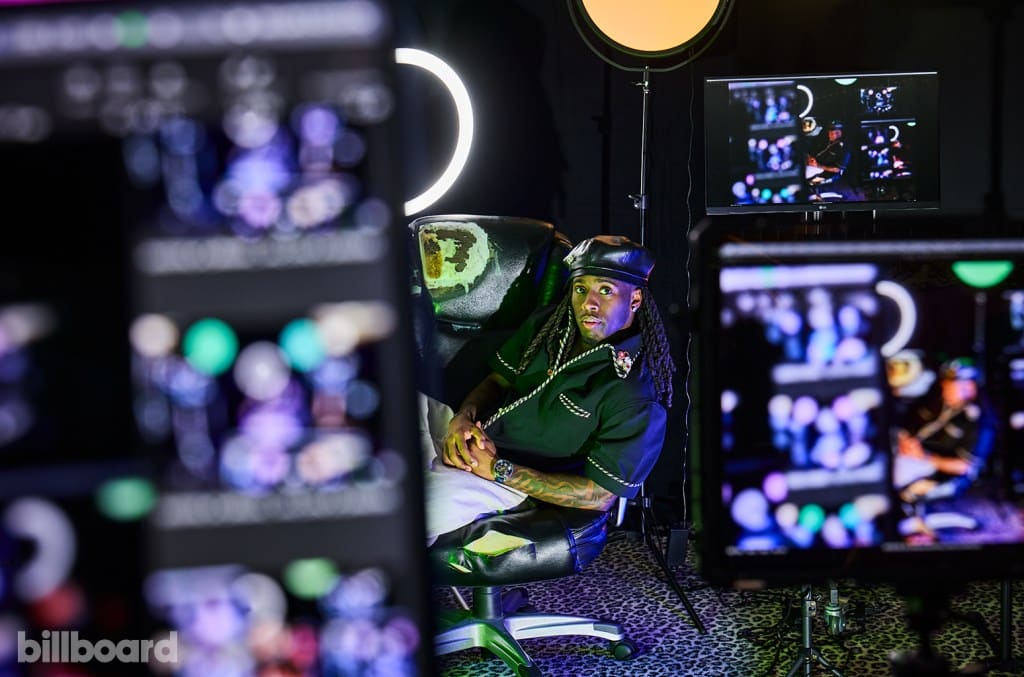Magazine Feature
Page: 2
Hours into their Billboard Women in Music photo shoot, the members of aespa are goofing off. High-pitched giggles reverberate through the studio as Winter, Karina, Ningning and Giselle tickle one another’s sides, talk in silly voices and play with the straps on their leathery stage outfits. It’s mesmerizing to watch the four early-20-somethings be so, […]
The show was, unequivocally, going off. In time with the beat, columns of fire blasted from a complicated and expensive-looking stage setup as a litany of dance hits blasted through the speakers of Los Angeles’ Kia Forum, where more than 15,000 people and their approximately 30,000 ears were gathered to hear the music. Drunk girls […]
On an overcast winter afternoon in McAllen, Texas, all six members of Grupo Frontera are huddled around an oversize white box, staring gleefully at its contents. They peel back the tissue paper wrapping to reveal a present their stylist has gifted them just a few days shy of Christmas — a mound of plush Polo […]
On the brick wall facing the Pittsburg Hot Links parking lot, a mural memorializes the small East Texas town’s most famous citizens, including Mean Gene the Hot Link King and Homer Jones, the New York Giants receiver who invented spiking the football after a touchdown. Soon enough, Pittsburg native Koe Wetzel could be right up […]
The 2025 edition of Clive Davis’ annual Pre-Grammy Gala — held Feb. 1 at The Beverly Hilton — had special meaning this year. The star-studded soiree transitioned into a fundraiser while celebrating a special milestone. “This year marks the 50th anniversary of this incredible night, but this one is a little different,” said Harvey Mason […]
Kai Cenat — the eternally upbeat streamer whose profile has exploded in recent years to make him the most popular personality on the Amazon-owned Twitch platform — is taking a moment to think. In the five years or so since he’s become a full-time content creator, Cenat has had some of the most famous hip-hop […]
“Bro, everything I thought I knew was gone. I thought I had a grasp on s–t. The songs that’s been out three weeks went up more than the classic records.” It’s an early Tuesday afternoon in mid-¬November and Tyler, The Creator is still in disbelief. Just a few weeks earlier, he’d released his new album, […]
When rumors of a lingering rift between two of KATSEYE’s six members reached the girl group this summer, they quickly turned the chatter into a viral moment. “We’re literally fine lol,” read the caption on a photo of Lara and Manon holding hands and posing on a backdrop of dolphins and rainbows, playing into a […]
On a balmy recent August evening, Gustavo Dudamel strode onto the stage of the Hollywood Bowl wearing a huge golden gauntlet on his left hand. He wouldn’t get to use it. Dudamel is dramatic, but he’s no comic book villain; he’s the music director of the Los Angeles Philharmonic, and he was there to conduct […]
Check out pics of the “A Bar Song (Tipsy)” hitmaker.

 State Champ Radio
State Champ Radio 










